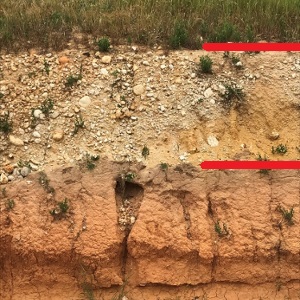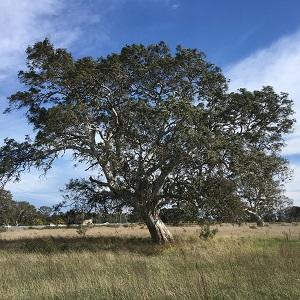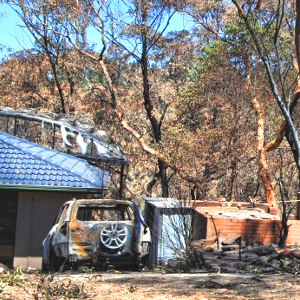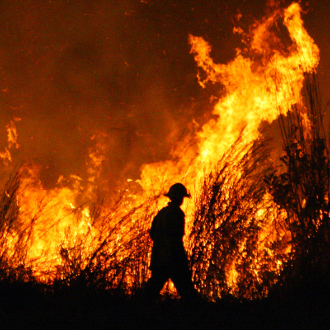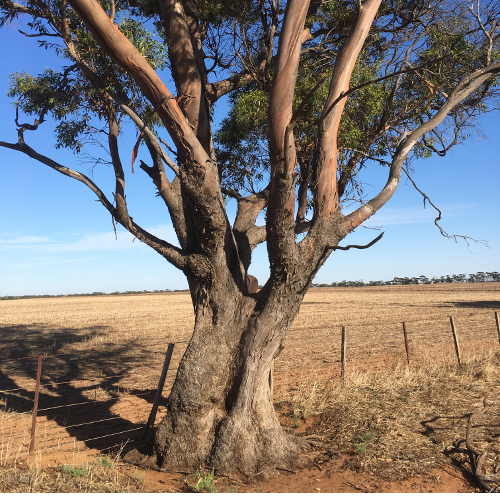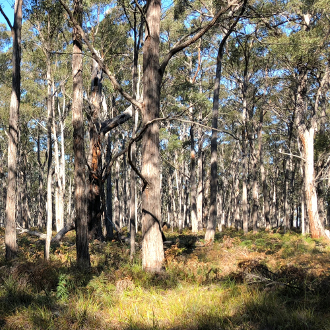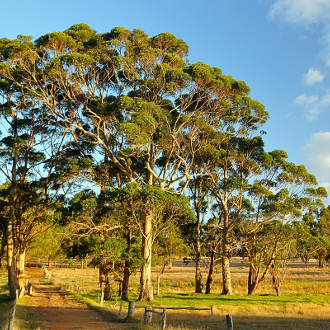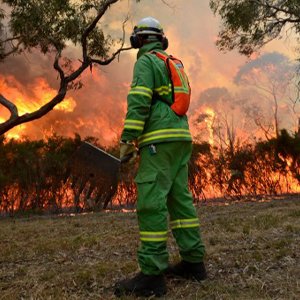Managing Bushfire Risk and Biodiversity Conservation in Land-use Planning
South-eastern Australia is one of the most bushfire-prone areas in the world. It also supports unique flora, fauna and ecosystems found nowhere else. As development in Victoria’s peri-urban fringes and rural communities extends into areas with both high bushfire risk and high conservation values, policy makers are challenged by two seemingly juxtaposed positions: how do you mitigate against bushfire risks to human safety and simultaneously conserve our precarious biodiversity?
In my 12-year career as a bushfire consultant and a consulting botanist, I’ve acquired first-hand knowledge in how policies regarding bushfire management and biodiversity conservation have interacted over time. The evolution of these policy considerations has been tenuous, with bushfire protection often given a higher priority over biodiversity values. This is now changing, and a more balanced approach is emerging that is important for industry to be aware of.
Native Vegetation Removal Exemptions in Bushfire-Prone Areas
The 2009 Victorian Bushfire Royal Commission instigated a major rethink of bushfire mitigation and management in Victoria. Nineteen of the Royal Commission’s 67 recommendations related to bushfire planning and building, and priority was given to the protection of human life above all other considerations in bushfire-prone areas (now contained in Clause 71.02-3). This resulted in sweeping native vegetation removal exemptions as part of Amendment VC83 via the introduction of Clause 52.48 Bushfire protection: exemptions in November 2011 (now Clause 52.12). The Clause allows the removal, destruction or lopping of native vegetation to reduce fuel loads around existing buildings (known as the 10/30 or 10/50 rules), and for a combined width of four metres along existing property boundaries without requiring a planning permit. This exemption only applies to buildings and fences that existed or were approved before 10th September 2009.
A further exemption added to Clause 52.48 under VC109 in July 2014 allows for the removal of native vegetation for the creation of defendable space as part of the Bushfire Management Overlay around single dwellings in nine residential and rural zones. The exemption allowances in this Clause can be viewed as a retrofitting solution that aims to address historic policy failures regarding the provision of acceptable separation distances from unmanaged vegetation around buildings as part of their construction, often to the detriment of our biodiversity. Discussions with various Council representatives in environmental/biodiversity management roles provides a recurring observation of noticeable changes to once native vegetation-rich landscapes, resulting in systematic thinning and fragmentation of the neighbourhood’s ‘green’ character. As a bushfire consultant, I understand the need to reduce fuel loads around buildings for human safety and asset protection, although when conducting site-specific and local-scale ecological assessments, I’m constantly reminded of how these activities can unnecessarily impact biodiversity.Biodiversity Conservation in Strategic Bushfire Planning
At the strategic settlement planning scale, a more balanced approach to bushfire mitigation and biodiversity conservation is evolving. The Royal Commission’s report determined that the planning system should not allow, or at least strongly discourage, development in areas that cannot achieve the minimum defendable space requirements without excessive costs to biodiversity. Amendment VC83 also resulted in changes to Clause 13.02 Bushfire (now Clause 13.02-1S) in which strategic bushfire land-use planning considerations were better articulated, including assessing the bushfire risk at the site to broader landscape scales and ensuring new developments are not located in areas that will result in an unacceptable bushfire risk.
Despite the improvements, this Clause only provided one vague dot point regarding native vegetation protection: to ’ensure any biodiversity and environmental objectives specified in the planning scheme are compatible with planned bushfire protection measures‘ (p6). It wasn’t until December 2017 through Amendment VC140, that biodiversity values were afforded stronger protection with regards to bushfire land-use planning. One strategy of this Clause directs settlement growth and development away from important areas of biodiversity where bushfire protection measures cannot be implemented without unacceptable biodiversity outcomes. While this may appear to be a minor change in the VPP, it is a fundamental mind-shift from ‘How do we develop here?’ to ‘Should we develop here?’ from both the bushfire safety and biodiversity conservation perspectives.DELWP v Yarra Ranges Shire Council [2019] VCAT 323
A recent VCAT Red Dot decision in the matter of DELWP v Yarra Ranges Shire Council [2019] VCAT 323 encapsulates the importance of considering biodiversity in planning applications. A single dwelling was proposed at a property in Healesville close to a creek-line on densely vegetated, steeply sloping land. One of the key reasons in refusing to grant a permit was the unacceptable impacts the construction footprint and defendable space would have on biodiversity and water quality. Furthermore, the prioritisation of human life above all other policy considerations as described in Clause 71.02-3 was cited, however the decision also determined that this does not provide a justification to ignore or nullify other planning objectives, including biodiversity and conservation values.Balanced and Good Planning
As our population continues to expand throughout peri-urban and rural environments, finding a better balance between bushfire risk management and conservation of biodiversity at all development scales is critically important. This can be achieved by ensuring that specialist bushfire and ecological advice is sought early during the planning and design process, and that relevant bushfire mitigation measures are adopted to ensure that unnecessary impacts to biodiversity are avoided. Where relevant, our team of specialists have found that holistically assessing these two considerations (often in one consolidated report) often results in better planning (strategic and statutory) and development outcomes.Further Information
For further information about bushfire risk management and biodiversity offsets, please contact our natural heritage team on 1300 839 325.



